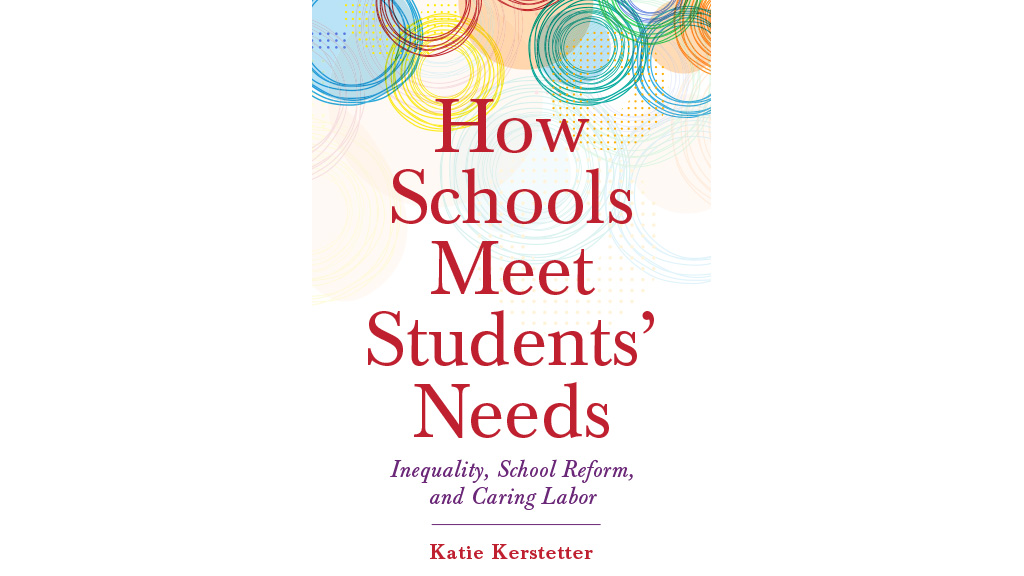
In How Schools Meet Students’ Needs: Inequality, School Reform, and Caring Labor, readers are introduced to school reform policies, including No Child Left Behind (NCLB). Author Katie Kerstetter outlines what the 2002 federal education law meant for achievement gaps and high-stakes standardized testing, and how it created the model of school choice (charter schools). Kerstetter goes on to outline school reform and economic inequalities in the United States. Providing such context allows the reader to understand better how specific policies have contributed to the gaps existing within the economy and public education.
In Chapter 1: “Beyond Standardized Testing,” Kerstetter examines ways in which teachers have sought to meet the needs of students socially, emotionally, and materially. She suggests that there is a great deal of work that goes into meeting students’ needs that stretches far beyond the classroom.
Kerstetter does a nice job outlining other contributing factors in meeting students’ needs and their ability to do well on standardized tests, such as consistently eating nutritious meals. Studies of school breakfast programs show that students who participate tend to score higher on standardized assessments. Other aspects of student health and wellness, such as adequate sleep, also impact students’ academic performance. The author makes a strong case for how vital eating breakfast every day is to high student achievement.
Kerstetter writes that developing relationships with students and families is also important to student performance on standardized tests. Teachers should want to get to know their students beyond their academic interests. The author provides an anecdote of a morning meeting in which students share something they are passionate about. Morning meeting time is an excellent way for teachers to connect with their students.
Although Kerstetter’s analysis highlights the experiences at two elementary schools (a charter school and a public school), the book’s content is helpful for educators at all levels. Particularly useful is when the author describes how teachers define good teaching and concludes that teachers need to concern themselves more with their internal audience (students) rather than those outside of the classroom. When teachers can differentiate instruction to meet the needs of their students, they consider themselves to be effective educators.
This book brings to light the trauma that students face due to pressures to perform well on standardized testing. Near the end of the book, Kerstetter touches on the importance of social and emotional learning in schools. One particularly valuable point by the author is how vital social and emotional learning is to improving student behaviors.
How Schools Meet Students’ Needs: Inequality, School Reform, and Caring Labor is a must-read for anyone who is currently teaching, considering teaching, or wants to learn more about eliminating inequalities in education.
PHOTO COURTESY OF RUTGERS UNIVERSITY PRESS
_____________________________________________________________________________________________
Nicholas Gathings (ngathin1@uncc.edu) is a doctoral student at The University of North Carolina at Charlotte.

Share this content